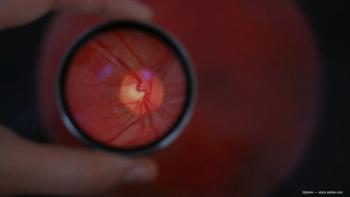
Expanded analysis confirms intracameral antibiotic for reducing endophthalmitis
An updated analysis from cataract surgeons at Kaiser Permanente Northern California again shows the benefit of intracameral antibiotic use for reducing the rate of postoperative endophthalmitis.
TAKE HOME MESSAGE: An updated analysis from cataract surgeons at Kaiser Permanente Northern California again shows the benefit of intracameral antibiotic use for reducing the rate of postoperative endophthalmitis.
By Cheryl Guttman Krader; Reviewed by Neal H. Shorstein, MD
Walnut Creek, CA-An updated analysis based on an expanded patient cohort corroborates the benefit of
“We can conclude that intracameral antibiotic injections are effective in
“However, due to the low incidence of this infection and because of the effectiveness of intracameral treatment,
In 2013, ophthalmologists from Kaiser Permanente Northern California published the first United States study demonstrating the efficacy of intracameral antibiotic injection for reducing the rate of postoperative endophthalmitis [J Cataract Refract Surg. 2013;39:8-14].
The study analyzed data from 16,264 eyes operated on between 2007 and 2011, including 12, 609 that received intracameral injection primarily with cefuroxime (84%), and found adoption of intracameral antibiotic use was associated with a 22-fold decline in the rate of clinical endophthalmitis.
The updated analysis included data for 129,077 procedures performed by 99 community-based surgeons in 20 surgical centers over the years 2005 to 2012.
Use of intracameral antibiotic for endophthalmitis prophylaxis began in late 2007 with injection of cefuroxime 1 to 2 mg into the anterior chamber. The intracameral technique was increasingly adopted over time, and at many centers, moxifloxacin 100 mcg was the preferred antibiotic.
In the series, cefuroxime accounted for about two-thirds of intracameral antibiotic use and moxifloxacin was used in almost all of the remaining cases. Overall, intracameral antibiotic was injected in 39.5% of study eyes and was almost always used together with a topical antibiotic.
The analysis excluded eyes that had planned complex surgery, cases that were performed by a retina specialist or oculoplastic surgeon, and cases with combined glaucoma or cornea surgery.
Cases of endophthalmitis occurring within 90 days of surgery were identified from diagnostic codes in Kaiser Permanente’s HealthConnect electronic health record. To validate the diagnosis, pertinent information from all of those cases was thoroughly reviewed by a trained medical abstractor and research ophthalmologist using defined criteria. A total of 113 validated cases of endophthalmitis were identified.
Risk of endophthalmitis was analyzed by logistic regression analysis that was conditioned on the surgeon to account for technique and unmeasured factors related to the surgeon and adjusted for age, year of surgery,
The intracameral only group had a similar adjusted odds ratio of infection (0.47), although the confidence interval overlapped 1. Patients with no record of pharmacy dispensing of a topical antibiotic were over 3 times as likely to develop endophthalmitis compared with the reference group (adjusted odds ratio = 3.10; 95% confidence interval 1.64 to 5.84).
“Intracameral antibiotic injection eliminates the added risk that occurs with failure of pharmacy dispensing or improper administration of topical drops,” Dr. Shorstein said.
In the analysis comparing intracameral antibiotic effectiveness, the risk of endophthalmitis was higher when moxifloxacin was used compared with cefuroxime (adjusted odds ratio = 1.3). However, the difference between groups was not statistically significant.
“When intracameral antibiotic use was introduced at Kaiser Permanente Northern California, the endophthalmitis rate decreased dramatically and it has continued to fall over time. “As a paradoxical effect of the increasing adoption of intracameral injection, the plummeting incidence of endophthalmitis makes statistical conclusion of the comparative effectiveness of this already rare complication even more difficult,” Dr. Shorstein commented.
In 2013, intracameral antibiotic was used in 79% of cataract surgery cases, he noted. Among about 25,000 injected eyes, the rate of endophthalmitis was just 1 in 12,000.
Neal H. Shorstein, MD
E:
This article was adapted from a presentation at the 2014 meeting of the American Academy of Ophthalmology. Dr. Shorstein has no relevant financial interests to disclose.
Newsletter
Don’t miss out—get Ophthalmology Times updates on the latest clinical advancements and expert interviews, straight to your inbox.








































